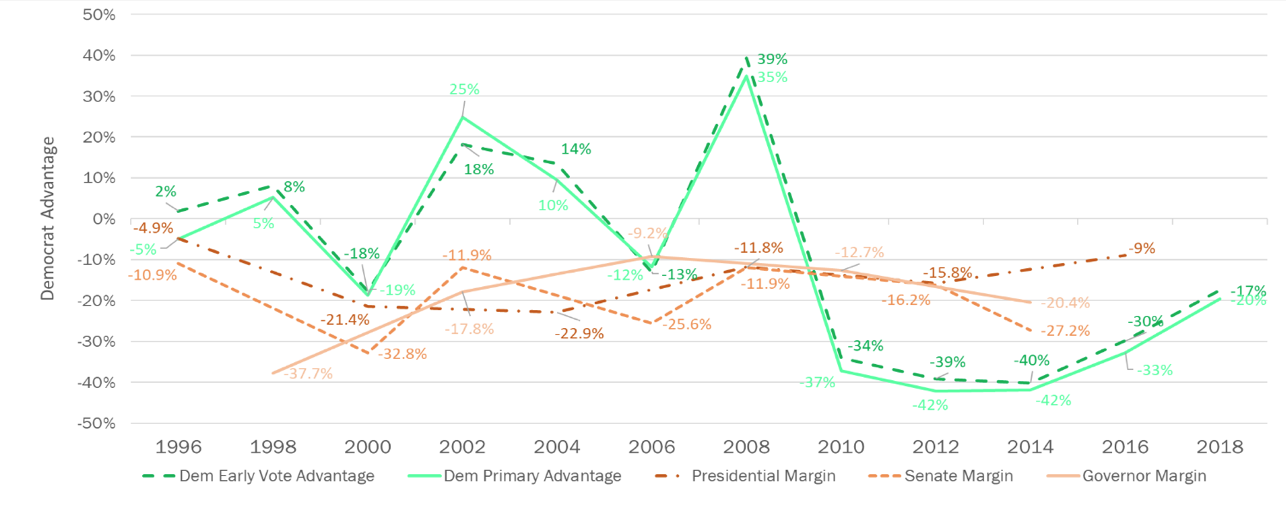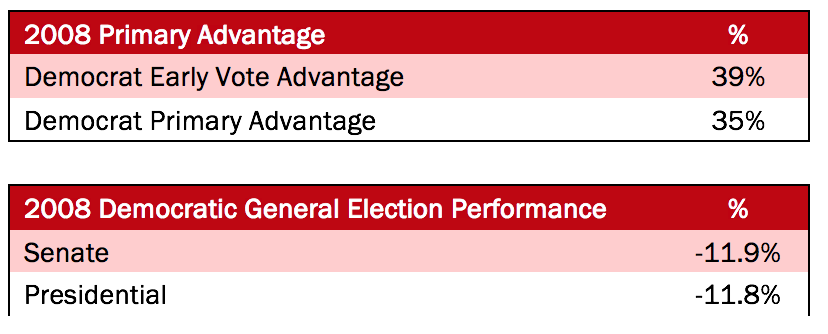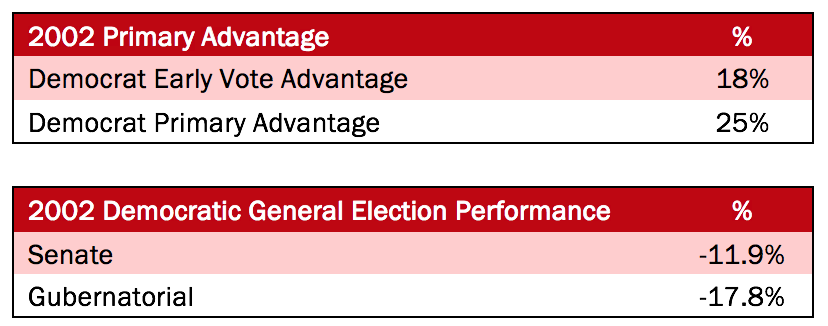March 6, as the polls opened across Texas for the Primary Election Day, pundits across the country were breathlessly pointing out correlations between early Democrat voting numbers and the potential of a ‘Blue Wave’ election this coming November.
The self-proclaimed ‘Big Data’ journalists spent a good part of the day, leading up to the polls closing posting heavily caveated tweets and articles alluding to the Democrat early vote advantage across the 15 largest counties in Texas serving as a potential bell weather for Democrat upsets in November. While unsubstantiated observations like this may draw attention to the writer, a closer look at historical data and last night’s results show clear flaws in this overused false narrative.
Our team at WPA Intelligence analyzed the data (as we do), and they show that zero correlation between Democrat primary voting and Democrat performance in the November general elections. Even if Democrats would have had a primary advantage in the 2018 primary (narrator voice: “they did not”), there is no evidence that that impacts the November election.

2008, The Democrat’s Year…
In 2008, a year in which Democrats took control of Congress and the White House, they posted a significant early vote advantage and a significant primary turnout advantage. Despite this fact, they lost both the Senate and Presidential ballot by almost twelve-point margin in Texas.

2002, a Midterm Example
In 2002, Democrats posted a significant primary turnout and early voting advantage. Again, despite the increased energy and enthusiasm, Democrats were outperformed by Republicans at the top of the ballot in both the Gubernatorial and Senate general elections.

2018, Reality
Despite the media’s constant proclamations of record early voting, “huge crowds” and “unprecidented Democrat enthusiasm” signaling party strength, the final election results show that Democrats actually posted a significant deficit in early voting and a deficit that widened still after all of votes were cast on Election Day.
While 2018 Democratic primary turnout represents an improvement from 2014 and 2010 mid-term elections, when compared to the two previous examples it is wishful thinking to argue that this result will magically translate to Democrat victories in November. Democrats have lost major statewide elections in Texas by an average of 15% over the past four cycles. It is not realistic to believe that the March 6th results signal a change in that pattern.
While Democrats have steadily improved in primary turnout in recent years, there is no indication that there will be a ‘Blue Wave’ in Texas this November.

